.303 SMLE Ammo Trade Study

I conducted a trade study on five manufacturers of ammunition for my new .303 SMLE (Short Magazine Lee Enfield).
It is a 1954 No 4 Mk II, made for use in Australia, but it was never fired. That is what made it appealing to me - in addition to having a projecting barrel.
The study regarded 5 ammo manufacturers: Winchester, Federal (150 gr and 180 gr bullets), Remington, prvi partizan, and Sellier & Bellot
The shapes of the rounds are similar to what I saw with my 8mm Mauser: the Winchester has a broad flat soft point, the Federal seems like a sharp clean round, the Remington has a hemispherical bullet (presumably for hunting), the prvi bullets seems to have more scarring, and the Selliers were bee-yoo-tiful.
Shot Placement
I shot at target paper at 50 yards, sitting but using no rests except for my elbows, using the rifle’s iron sights. The SMLE No 4 Mk II does not have a traditional blade-V sight, but rather the rear sight was an open circle perhaps 2-3 millimeters in diameter. I thought this would pose a big challenge in aiming -- to put the blade in the “center” of the circle, but it seemed to work out OK. And this was for the minimum 100 m setting. For longer ranges, the rear sight flips up and uses a circle with a diameter less than 1 mm.
The following are photos of my target papers. Visually, it looks like the Federal or perhaps Winchester produces the tightest grouping, the Sellier the worst, and the prvi partizan failed to feed properly. With the prvi, the bullet would grab the feed ramp with too much friction and I could not make the bolt move forward.
When I next conduct a strict accuracy test, for both the 8mm Mauser and the .303 SMLE, I will bring something for a gun rest, use the 100 yard range, and bring Winchester and Federal ammunition.

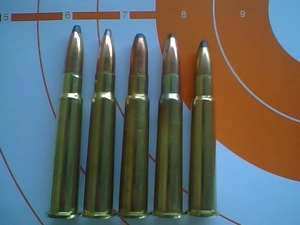
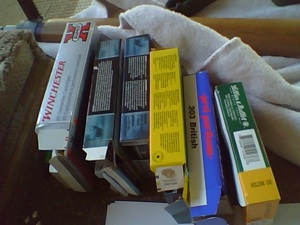
The boxes
The rounds, left to right,
Winchester, Federal, Remington, prvi partizan, and Sellier & Bellot
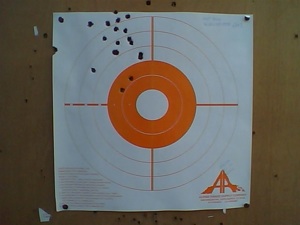
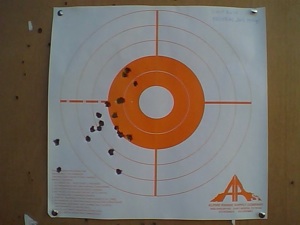

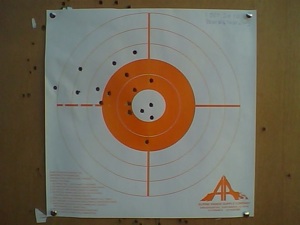
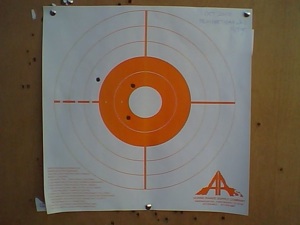
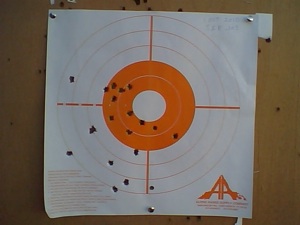
Winchester
Federal 150 gr
Federal 180 gr
Remington
prvi partizan
Sellier & Bellot

Muzzle Velocity
The following chart clearly shows the higher speeds of the lighter mass bullets (150 gr vs 180 gr); however, we also see the increasing speed from the Winchester, Remington, to Federal 180 grain bullets. The Federal 180 grain bullets are only slightly slower than the 150 grain Sellier & Bellot rounds. The speed differences can be attributed to variations in propellant. From this, I can derive that the Federal 150 grain bullet rounds not only have the highest muzzle velocity, but also the highest momentum and kinetic energy.
I need to get a scale and weight the rounds before firing, and of the case after firing, for each round, to correlate speed versus propellant. When I get around to loading my own rounds, I can make a rigorous study, including variability for a given exact weight of propellant.